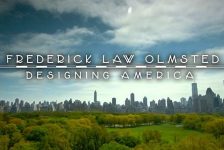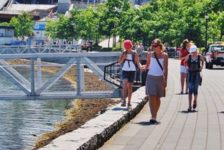With the threat of food security looming, experts expect “food” to become an ever-increasing part of our landscape; yet it’s already here! Albeit perhaps on a different scale than Vertical Farms or Productive Landscapes, foraging has opened many peoples’ eyes to just how productive and intricate our landscapes can be. In a previous article, I shared an overview of what foraging is, as well as some things to be excited about and aware of. That article focused on rural foraging. Here, we’ll take a look at something that is perhaps a bit closer to home for many of us – urban foraging. Although connected, it is not to be confused with freeganing or “Dumpster diving”, where people opt out of the capitalist-economic system by trying to avoid buying as much as possible. Popular with the Local Food Movement and Locavores, urban foraging is sourcing “wild” food and herbs within an urban or city environment. Urban foraging directly links us to the landscape and raises our awareness of food, opening up exciting propositions in terms of food, society, and urbanism. UNLIKELY PLACES Take a walk around your city – what do you see? In place of woodland edges, hedgerows, and grassy fields there are bushy shrubs in council beds, and embankments along roads and parks. No doubt these are filled with edible berries and weeds. This is precisely the point. Do you see a scraggly bush by the motorway? Or do you see a small part of a potential food system that could run for miles? The idea of Productive landscapes and vegetable-growing towns such as Todmorden and Middlesborough in the UK has been talked about elsewhere on LAN. What these initiatives highlight is the potential productivity our towns and cities can instigate. Foragers take advantage of what productivity is already there. For instance, Abundance – a community project based in Chiswick, London — picks fruit from private land, such as apples, pears, plums, and so on, that would otherwise go to waste (and make a small donation to the land owner). ETHICS? With links to, and the emergence of, guerilla gardening, it is easier to forage than ever before, although the dangers of foraging mentioned in the previous article apply here just as much. Nascent urban foragers should also be aware that at the moment in the UK, it is illegal to pick fruit from overhanging branches. It’s issues like this that foraging could help raise awareness of: What’s more ethical, to leave a tree unpicked in abidance of the law or to pick a fruit off the tree before it falls to the ground and is wasted? ATTACK THE FRONT LAWN The idea of waste vs. productivity is something analyzed by Diana Balmori and artist Fritz Haeg in their project Edible Estates: Attack the Front Lawn. The principle here is that the American front lawn is a huge drain on water resources across the country – but what if we used these areas more productively? What if you had an edible front lawn? As Balmori says, “Our private land can be a public model for the world in which we would like to live.” Indeed, your back garden is one of the best places to forage; from Chickweed (Stellaria media) –yummy in salads — to Dandelions (Taraxacum officinale) – good in risottos. Don’t dismiss common Stinging Nettles (Urtica dioica) either – young nettles are absolutely packed with nutrients and are used in a wide range of medicines, from shampoos to prevent dandruff to supplements to combat arthritis. Don’t just put them in the bin — make a hearty nettle soup, some nettle wine with a kick, or a foraged version of a saag aloo. A few last words to remind those inspired by the article to be careful. Be mindful that gardeners or councils could have sprayed pesticides or chemicals on what you are picking. Also, don’t forget to ask permission if on private land, and never uproot a plant! Of course, one of the most important rules is to only take what you need – or even less. Don’t over forage. Yet who knows: If Edible City plans, productive landscapes, and Green Infrastructure come to play a bigger part in our cities, one day the urban jungle could be filled with spoils rich for the picking! Article by Sonia Jackett
This article was originally submitted to Landscape Architects Network
Published in Blog











